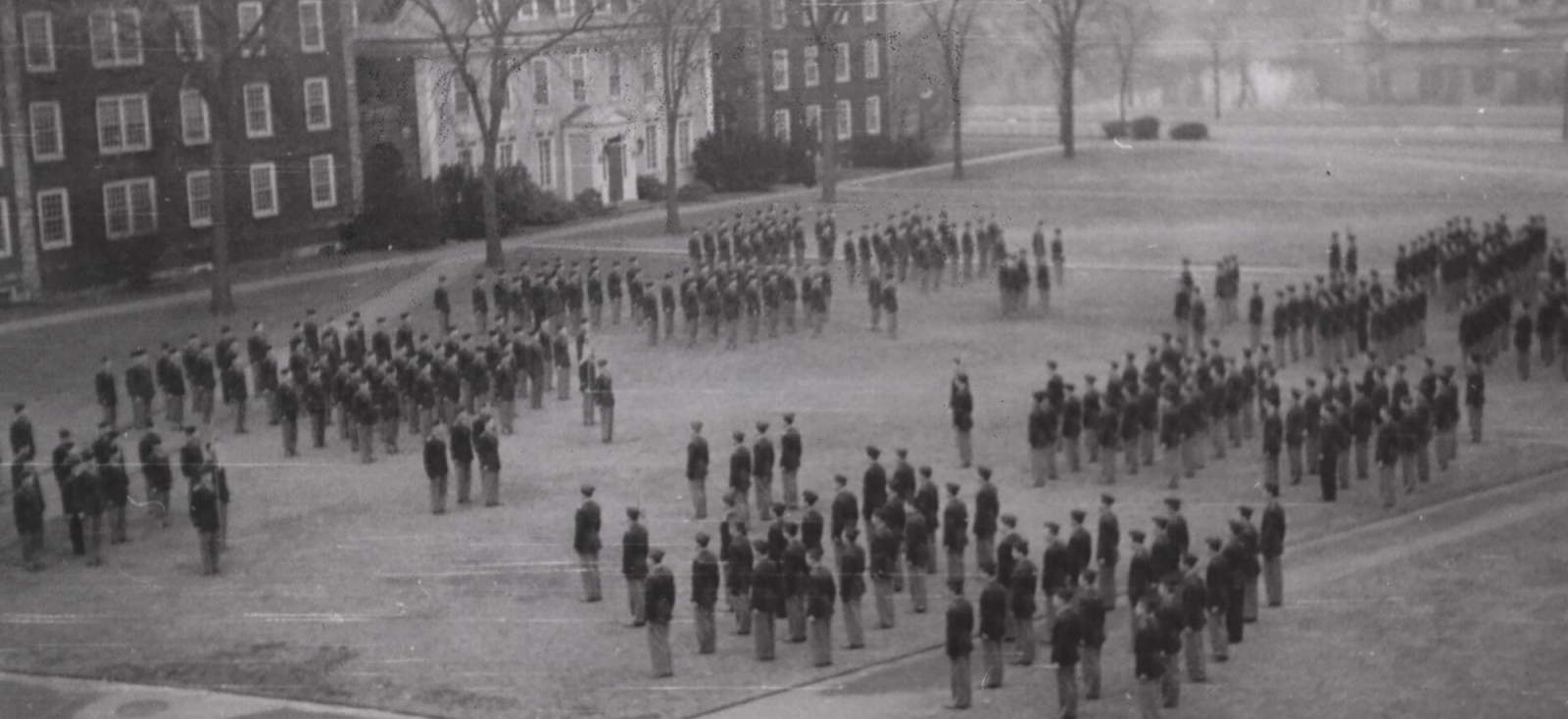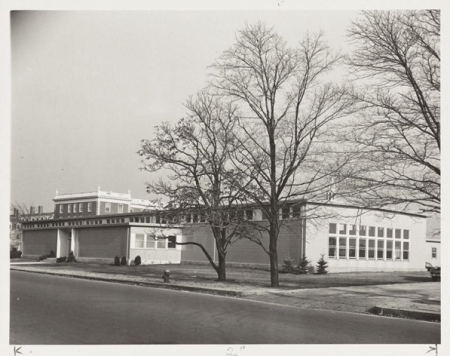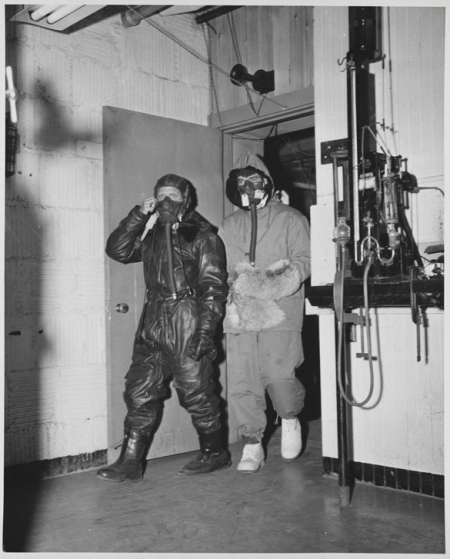
When the United States entered World War II, Harvard Business School (HBS) found its enrollment dropping as men were called to fight overseas. At the same time, the U.S. military was facing an increased need for officers trained in statistics and supply chain logistics. In 1939, Dean Wallace B. Donham proposed that the school assist with the war efforts, in part by enrolling students in a new program in Industrial Administration.
This program began in 1940. In the same year, the Navy Supply Corps School (NSCS), consolidated its multiple operations to one location at HBS. The NSCS was assisted by HBS faculty, a few of whom accepted commissions in order to teach.

To accommodate the influx of Navy students, two new buildings were constructed: Cowie Hall housed a dining facility for the military students and Carpenter Hall contained classrooms. Baker Library was also renovated to accommodate additional classrooms.
Over the next few years, a number of programs were inaugurated:
- the Army Quartermaster Course
- the Navy War Adjustment Course
- the Army Air Forces Statistical School
- the Army Supply Officers Training School
- the Army Air Forces War Adjustment Course
- the Navy Industrial Accounting Course
- the Navy Supply Corps Midshipmen-Officers Corps
- the Navy Surplus Disposal Indoctrination Course
These programs were taught primarily by HBS faculty — using the case method — following a curriculum jointly designed by HBS and the military.

The Harvard Fatigue Laboratory on the HBS campus, formerly engaged in studies of manual labor, was repurposed for the development and study of military equipment and clothing.
In 1943, the faculty voted to suspend the MBA program in order to devote their full attention to the wartime schools. It would not resume until 1945. Alongside the military programs, HBS continued to teach civilians in the Industrial Administration program and the War Production Training Course.

At the conclusion of the war, the MBA program was redesigned based on the lessons learned from the wartime schools. Some students who had completed wartime programs were accepted directly into the second year of the MBA program. The War Industry Training Course was renamed, first to the Management Training Course and later to the Advanced Management Program (AMP), which enrolled returning veteran officers. AMP was the first Executive Education course at HBS and was a direct outgrowth of the efforts to retrain veteran officers for civilian management.
The HBS Archives holds records related to many of the wartime schools:
Accessing These Materials
All materials are available for use in Baker Library's de Gaspé Beaubien Reading Room.
Researchers interested in using HBS Archives collections should complete an HBS Archives application prior to visiting.